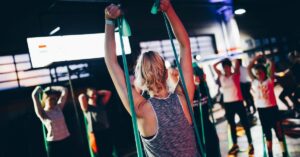The Ultimate Guide to Effective Home Workouts That Require No Equipment

The Ultimate Guide to Effective Home Workouts That Require No Equipment
In a world where gym memberships can be an expensive commitment and time constraints often dictate our schedules, the idea of working out at home without any equipment has gained significant traction. But let’s face it: the concept of exercising in the comfort of your own living room, or perhaps in a cozy corner of your bedroom, can sometimes feel a bit daunting. Still, I remember when a friend of mine, convinced they could never reach their fitness goals without a fancy gym setup, finally decided to give home workouts a chance. Fast forward a few months, and they were not only fitter but also had a newfound appreciation for the simplicity of bodyweight exercises. So, how can you embark on a similar journey? Buckle up; we’re about to dive into the nitty-gritty of effective home workouts that require no equipment!
Understanding the Basics of Bodyweight Training
Before we get into specific workouts, it’s essential to grasp what bodyweight training is all about. Simply put, bodyweight exercises utilize the weight of your own body to build strength, improve endurance, and enhance flexibility. This approach to fitness has several benefits:
- Accessibility: No gym? No problem! You can do these exercises anywhere.
- Cost-effective: Say goodbye to pricey equipment and memberships.
- Versatility: There’s a wide variety of exercises to keep things fresh and exciting.
Now, you might wonder, “Can I really get a solid workout without fancy machines?” The answer is a resounding yes! Studies have shown that bodyweight training can significantly improve strength and fitness levels, with some research suggesting it can be as effective as traditional weight training. So, let’s get to the good stuff—what can you do?
Crafting Your Home Workout Routine
When it comes to home workouts, having a structured routine can be a game-changer. But how do you create one? Here’s a simple framework that you can follow:
1. Warm-up: Get Moving!
Before you dive into the intense stuff, warming up is crucial. It prepares your body, reduces the risk of injury, and honestly, can just make you feel more energized. A good warm-up could include:
- Dynamic stretches (think arm circles, leg swings)
- Light aerobic movements (like jogging in place or jumping jacks)
- Mobility exercises (such as hip circles or torso twists)
A five- to ten-minute warm-up should do the trick! (Trust me, I’ve skipped this step before and ended up regretting it.)
2. The Main Workout: Choose Your Exercises Wisely
Now, let’s get down to business. Depending on your fitness level and goals, you can mix and match the following exercises. They can be done in a circuit format, where you move from one exercise to the next with little rest, or in individual sets with breaks in between.
Strength Exercises
These help build muscle and endurance:
- Push-ups: A classic move that targets your chest, shoulders, and triceps. Variations include incline, decline, and diamond push-ups for added challenge.
- Squats: Perfect for your quads, hamstrings, and glutes. Try sumo squats or jump squats to spice things up.
- Lunges: A great way to work on balance and coordination. Front, back, and side lunges can be part of your arsenal.
- Plank: A killer core exercise that also works your shoulders and back. You can try side planks or plank jacks for more intensity.
Cardio Exercises
Get that heart rate up with these moves:
- Burpees: A full-body exercise that combines strength and cardio. They’re tough but oh-so-rewarding.
- High knees: A simple yet effective way to boost your heart rate.
- Mountain climbers: Works your core and gets your heart pumping.
Flexibility and Cool Down
After a good workout, don’t forget to cool down and stretch. It aids recovery and improves flexibility. Some stretches to consider:
- Hamstring stretch
- Quad stretch
- Shoulder stretch
- Child’s pose
3. Frequency: How Often Should You Work Out?
Ah, the age-old question: “How often should I work out?” Well, the answer largely depends on your personal goals. If you’re a beginner, starting with two to three sessions per week can be effective. As you get more comfortable, aim for four to five times a week. Just remember to listen to your body—if you’re feeling sore or fatigued, it’s okay to take a rest day (or two!).
Sample Workouts to Get You Started
To take the guesswork out of your routine, I’ve put together a couple of sample workouts. Feel free to tweak them to suit your preferences!
Beginner Workout
This routine is perfect for those just starting out:
- Warm-up: 5 minutes of jogging in place
- 10 Push-ups (knee variations if needed)
- 15 Squats
- 10 Lunges (each leg)
- 30-second Plank
- Cool down: Stretch for 5-10 minutes
Repeat this circuit 2-3 times, resting for 1-2 minutes between each round.
Intermediate Workout
If you’re looking for more of a challenge, give this a go:
- Warm-up: 5 minutes of dynamic stretching
- 15 Push-ups (add variations if you want)
- 20 Jump Squats
- 15 Lunges (alternating legs)
- 30 seconds Mountain Climbers
- 30 seconds Burpees
- Cool down: Stretch for 5-10 minutes
This circuit can be repeated 3-4 times, with 1-2 minutes of rest between rounds. You’ll be sweating in no time!
Maintaining Motivation and Consistency
Staying motivated to work out at home can be tricky. Some days, the couch seems far more inviting than the idea of doing another set of push-ups. I’ve been there! Here are a few tips to help you stay on track:
- Set realistic goals: Whether it’s doing a certain number of workouts per week or mastering a new exercise, having clear goals can keep you focused.
- Create a designated workout space: Even if it’s just a corner of your living room, having a specific area can help signal to your brain that it’s time to exercise.
- Find a workout buddy: Whether virtually or in person, having someone to share the experience with can boost motivation.
- Track your progress: Keep a journal or use an app to log your workouts. Seeing your improvements can be a great motivator!
Nutrition: Fueling Your Workouts
No workout routine is complete without considering what you put into your body. Nutrition plays a crucial role in your fitness journey, and you don’t need to follow any fad diets to make a difference. Here are some general tips:
- Stay hydrated: Water is essential for optimal performance. Aim for at least 8 cups a day, more if you’re sweating it out!
- Prioritize whole foods: Fill your plate with fruits, vegetables, lean proteins, and whole grains. They provide the nutrients your body craves.
- Listen to your body: If you’re hungry, eat! If you’re not, don’t force it. Your body knows what it needs.
Common Mistakes to Avoid
As with any fitness journey, there are a few pitfalls you might encounter along the way. Here’s a list of common mistakes to watch out for:
- Skipping warm-ups and cool-downs: As I mentioned earlier, these are crucial for injury prevention and recovery.
- Not challenging yourself: If you find your workouts getting too easy, it’s time to up the ante! Try more reps, different exercises, or less rest between circuits.
- Neglecting form: Proper form is key to maximizing the effectiveness of your workouts and preventing injuries. If you’re unsure, there are countless online resources and videos to help.
Conclusion: Your Fitness Journey Awaits!
There you have it—the ultimate guide to effective home workouts that require no equipment. Whether you’re a seasoned athlete looking for a change of pace or a beginner just starting out, these tips and routines can help you reach your fitness goals without the need for a gym. Remember, the most important part is to stay consistent, listen to your body, and, above all, have fun with it! After all, it’s not just about the destination; it’s about enjoying the journey. So, lace up those sneakers and get moving—your living room is waiting!







